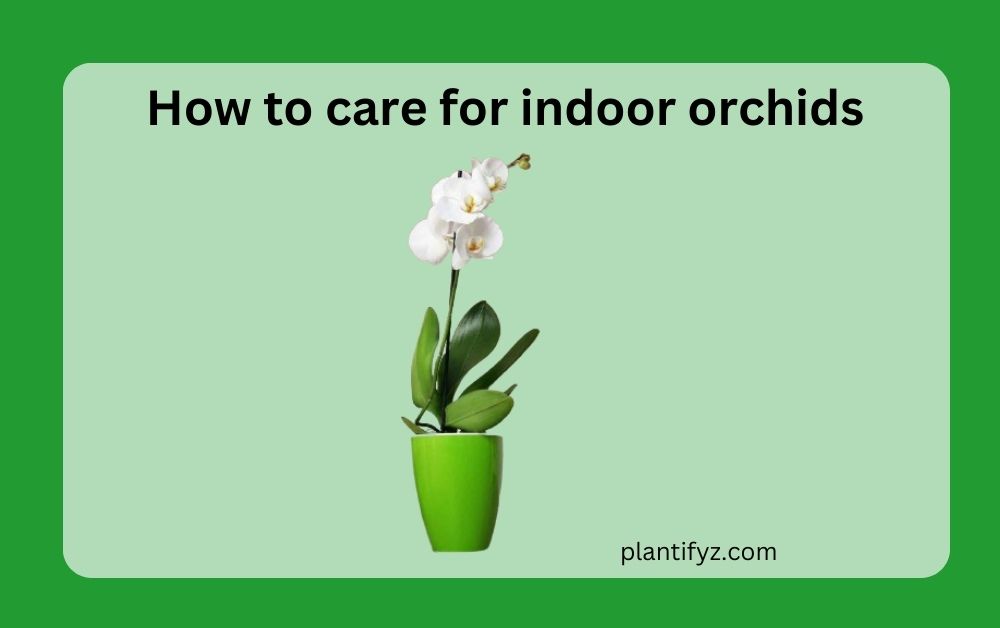Indoor orchids have some specific care requirements that are different than outdoors. There are some issues with lighting and watering for not getting enough sunlight, and finding a solution becomes a great challenge. Here we’ll talk about how you can care for your indoor orchids and have a nice blooming every year.
Indoor orchid light solutions
In their natural habitat/tropical forest they grow in tree bark where they get a lot of sunlight but indirect and filtered around 12 to 14 hours a day. Different regions have different day time and indoors at some specific places where the orchid is placed may not get that much light, the plant will most likely get 3 to 4 hours.
Talking about caring indoors we need to replicate their natural habitat environment including light.
For enough light, keep orchids near a window as much as possible. If you can’t place the orchids in north or east-facing windows, you have to go for feet away from south or west-facing windows. This placement arrangement avoids direct sunlight exposure giving enough light to the plant. If your orchids get a direct hit of sunlight that will lead to problems like sunburn.
Like their natural habitat, you have to diffuse the sunlight with a sheer curtain.
If the plant still doesn’t get enough sunlight or you don’t have window facilities, you must use a grow light. Grow light helps in photosynthesis like sunlight and becomes a substitute for sunlight. Remember no matter what happens, the orchids will need their required light.
The proper way to water indoor orchids
Watering is crucial to keep your orchids alive, you need to know the proper water consumption behavior of the orchids in a week. The rule is simple observe for a few days to weeks and continue for the orchids’ lifetime.
Most people do wrong with overwatering, you have to be aware of that too. The roots need humidity, but that doesn’t mean they need a lot of water. This problem can lead to root rot and eventually death.
A general rule is, to tap the potting mix with your finger, and go deep from 1 cm to 1 inch in the soil. If the soil. If the soil feels dry it’s time to water your orchid and if it feels moist, the soil is holding water meaning you have to wait until it becomes dry.
The standard and recommended frequency is every 5 to 7 days. Different species may have different requirements. Better you know which species you have and you will know the water requirements by finger tapping method.
Morning is the best time to water your orchid, it helps to evaporate extra water from the soil holding enough water for the indoor orchid reducing the risk of overwatering.
Sometimes, tap water contains salt and high minerals which is harmful to orchids so be careful when using tap water. If you are unsure about your tap water purity consider using rainwater, filtered water, and distilled water.
Don’t let water accumulate at the bottom of the jar to reduce the risk of overwatering. Healthy orchid root color will be green or silver or both and if the root color looks rotten consider cutting the rotten rot and repotting.
The potting mix
As epiphytic plants, the best medium for orchids is a tree, indoors which we can’t do. The orchid potting mix has some requirements that need to be fulfilled like the potting mix needs to have a lot of aeration system for the roots, the potting mix needs to hold enough moisture releasing extra water and it should not contain soil as we are trying to mimic their natural growing medium.
You will need 4 things as the base of the potting mix pumice, sphagnum moss, tree bark, and charcoal.
Decide how much potting mix you will need. 2.5 parts of tree bark as the base of the mixture, 1.5 parts of pumice for aeration improvement, half moss for drainage and aeration, and half charcoal to control the smell of the decaying potting mix.
Choosing the pot
Glass pot is a general pot and favorite choice for most of the orchid enthusiast. It lets you see the roots’ health, potting mix condition, and water condition. A ceramic pot is also a nice choice for indoor decoration; also terracotta pot does a great job as it has the natural ability to absorb water and keep the medium humid. There is nothing complicated about pot choose whatever you like.
Temperature and humidity care for indoor orchids
The temperature should be between 70°F to 80°F (21°C to 27°C) with 5°F to 10°F fall at night. If the plant gets enough sunlight indoors it is enough to keep an orchid healthy. You should check your room temperature with a thermometer. If the temperature needs to be increased consider using and heat source like a space heater.
The temperature can vary depending on the species’ natural habitat such as Phalaenopsis, Dendrobium nobile and Vanda need high temperatures from 70°F to 80°F (21°C to 27°C), Odontoglossum, Cymbidium, and Masdevallia require low temperature from 50°F to 70°F.
As orchids are tropical plants that will need high humidity; 50 to 70 percent which is a normal humidity and there is nothing to do extra. But if you live in an area with low humidity you can consider misting the orchids regularly, using a humidity tray, placing other plants near it, and using a humidifier.
Fertilization rule for indoor orchids
A rule of thumb is to use water-soluble orchid fertilizer at half the recommended strength indicated on the packaging. Application frequency should be every 4 to 8 weeks, with a decrease in the winter months due to reduced plant requirements. Avoid over-fertilizing, as this can lead to issues such as stunted growth, yellowing leaves, diminished flowering, and eventual plant demise.
When applying fertilizer, ensure that the roots are moist, as fertilizing dry roots can result in burns. It’s important to prevent fertilizer contact with the leaves to avoid leaf burn. To enhance blooming, consider using a bloom booster approximately two months before spring. This aids the plant in focusing its energy on the blooming process.

